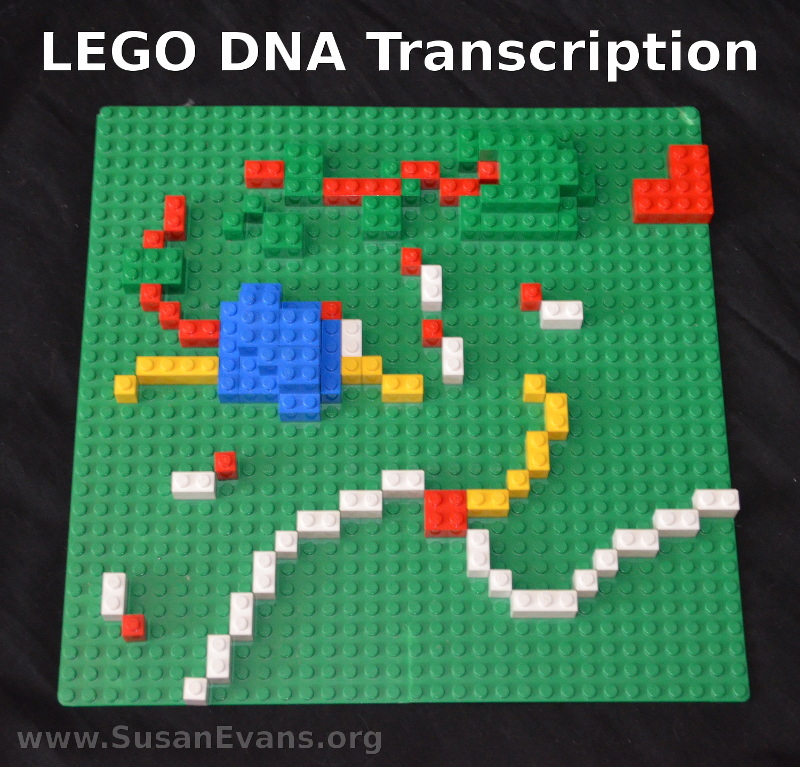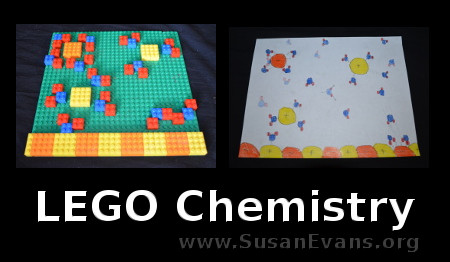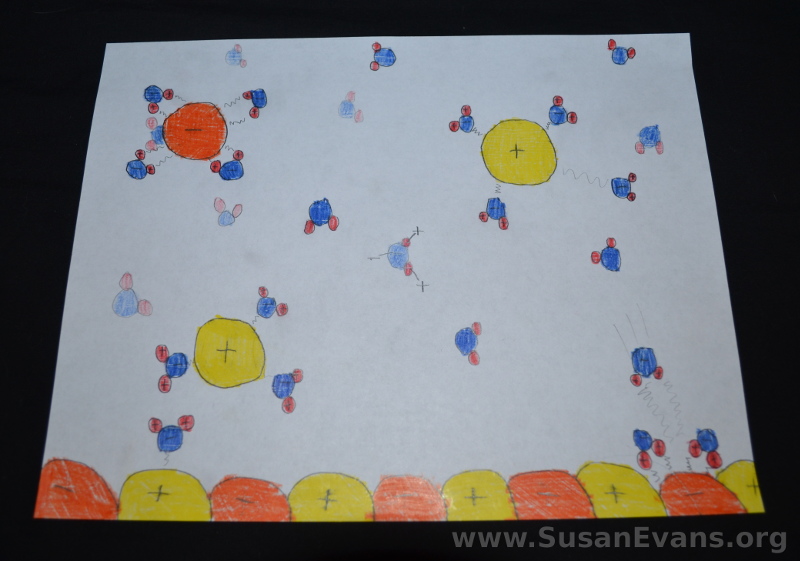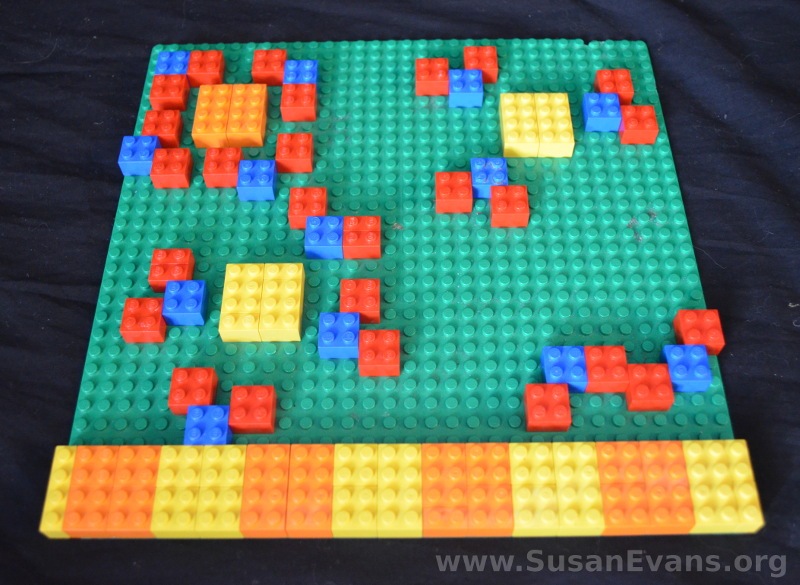When you are studying biology, why not make a LEGO DNA transcription model? This will help your high school students to internalize this process by participating in a hands-on activity to reinforce the concept.
This is a picture of DNA as it is being turned into RNA and proteins. You can look at a drawing in a textbook to see what shape you should make with the LEGOs. Start with a green LEGO base, and build up the DNA transcription process little by little.
DNA Transcription
Here is my son’s description of this process:
First a molecule called RNA Polymerase speeds down the DNA strand, unzipping the double helix and making messenger RNA, using nucleotides floating around. The RNA is basically the same as the DNA except that instead of Thymine (T), the RNA has Uracil (U).
When the RNA Polymerase reaches a special end code in the DNA, the mRNA strand is released into the cytoplasm of the cell. A ribosome forms around it. The ribosome takes transfer molecules with amino acids on them and links them to the mRNA.
Each transfer molecule has a group of three letters, called a codon, on it. The codons link up with the mRNA and, in doing so, make a protein with the amino acids they are carrying. Then the empty transfer molecules leave the mRNA and leave behind their amino acids as more take their place.
This goes on until the protein is complete. Then it goes off to a chaperone, which is a special machine for folding proteins. When the protein is folded, it is done, and it goes off to the part of the cell where it is needed.
DNA Transcription Video
If you look at the LEGO DNA transcription model at the top of this page, you can find out exactly what is happening in the model by watching this short video:







